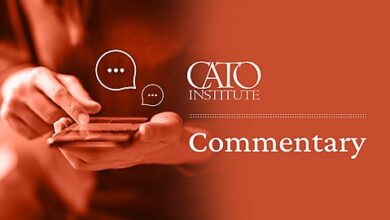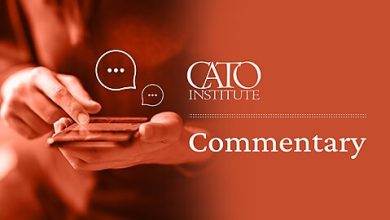Warburton on Theories of Monetary Control and the Fed

In December 1946, Clark Warburton published an article in the Political Science Quarterly titled, “Monetary Control under the Federal Reserve Act,” which was reprinted in chapter 14 of his landmark book, Depression, Inflation, and Monetary Policy (1966). He argues that the Federal Reserve’s failure to prevent the Great Depression was “a result, in part, of the inadequacy of the monetary theory underlying the [Federal Reserve] Act and, in part, of the failure to carry out in practice the theory which was embodied in the Act” (Warburton, 1966: 301; all page numbers refer to his book). In particular, if the Fed had taken into account the importance of monetary deficiency, relative to the demand for money, the Great Depression and banking crisis could have been avoided. By focusing on preventing speculation, rather than thinking in terms of a suitable quantity of money to provide for normal production and price stability, the Fed was led to restrict money growth rather than expand it to maintain total spending and income on a level growth path.
Although the Federal Reserve Act of 1913 was intended to adhere to what Warburton called the “convertibility theory” of monetary control, the Fed subsequently drifted away from that theory. Nor did the Fed ever fully embrace what Warburton called the “responsibility theory” of monetary control. Hence, he concluded:
Monetary law in the United States is ambiguous and chaotic, does not contain a suitable principle for the exercise of the monetary power held by the Federal Reserve System, and has caused confusion in the development of Federal Reserve policy [316; page numbers refer to the 1966 reprint].
Warburton’s concern with the ambiguity of U.S. monetary law may have been expressed more than 75 years ago, but it is still relevant today. As Scott Sumner recently pointed out:
The current ill-defined dual mandate [calling for maximum employment and price stability] allows each side of the political divide to latch onto its preferred policy indicator and to argue that money is either too easy or too tight. This polarization has been especially pronounced during the Great Recession.
A look back at Warburton’s thoughts on monetary control and the Fed can shine a light on the need for sound theory and credible institutions that help reduce uncertainty and anchor expectations regarding long-run price stability.
General Theories of Monetary Control
Warburton uses the term “monetary control” to mean “the set of devices designed to provide the nation with a suitable quantity of money” (291), which he viewed as “a necessary condition for maintenance of normal production” (315: fn 30). In studying U.S. monetary history, from the late 1840s to the end of World War 2, Warburton recognized two major theories of monetary control. The first of those theories rested on having a convertible currency and the institutions needed to support it, especially a credible promise to redeem currency in specie. The second theory was applicable to a fiat money regime and required that the monetary authority limit the quantity of money to avoid inflation while providing a suitable quantity of money to maintain normal production.
The Convertibility Theory
Maintenance of a gold standard did not require a central bank. What it did require was trust in the principle of convertibility—both convertibility of one kind of money into another (e.g., bank deposits into currency) and, especially, the direct or indirect convertibility of all forms of money into gold (Warburton, 292).
The Responsibility Theory
This theory holds that the monetary authority should determine the suitable quantity of money that would ensure long-run price stability and normal production, and be held accountable for doing so. Warburton presumes that “some agency of the federal government” would be given responsibility for monetary control, because Article 1, Section 8 of the Constitution gives Congress the power to regulate the value of money (Warburton, 292). Of course, “money,” at the time the Constitution was drafted, referred to specie, not paper currency.
Monetary Control under the Federal Reserve Act of 1913
In passing the Federal Reserve Act of 1913, Congress adhered to the convertibility theory of monetary control. According to Warburton (293):
The Federal Reserve Act was drawn in terms of the convertibility theory. The Act contained no provision giving the Federal Reserve Board or the Federal Reserve banks, either specifically or by reasonably clear inference, responsibility for monetary control in the sense of making it the duty of any officials in the system to estimate the most suitable quantity of money for the use of the nation and to maintain the quantity of money in accord with that estimate of need.
Monetary reforms always stem from shortcomings in the existing system. The lack of an “elastic currency”—that is, one that responds quickly to changes in the demand for money—was an important reason for establishing the Federal Reserve System. As Warburton (293) put it:
The monetary problem to which the agitation for a “sound currency” was directed was the establishment of a set of conditions under which the total quantity of money (circulating media), and the division of this quantity between bank deposits and pocket currency, would fluctuate in accordance with the decisions of individuals and business enterprises respecting the amount and kind of “cash” which they needed for personal and business use.
It was thought that this outcome—namely, that “the total quantity of circulating media and the quantity of pocket currency would be neither inadequate nor excessive”—would best be achieved if the following conditions were satisfied: (1) “Convertibility of one kind of money into another is assured”; (2) “The standard form of money is directly convertible or redeemable, and . . . all forms of money are indirectly convertible into some highly prized durable commodity, preferably gold”; and (3) “The assets of banks with deposit liabilities or circulating notes serving as money are predominantly short-term loans based on commodities in the course of production or marketing” (Warburton, 293–94).
The Fed was created to fulfill those conditions. However, as Warburton (294) notes, the Federal Reserve Board and Reserve banks “were not given full responsibility either for monetary convertibility or for the limitation of bank assets to the approved types, since existing arrangements deemed satisfactory were not disturbed.” Meanwhile, responsibility for issuing gold and silver certificates, as well as minor coins, rested with the Treasury, as did maintaining the convertibility of circulating notes and coins into gold.
The Federal Reserve Act did provide for the issuance of Federal Reserve notes, thus addressing the problem of an inelastic currency. However, confusion of the Fed over loan control versus monetary control and reliance on the real bills doctrine—an unsound principle for monetary control (see Humphrey and Timberlake)—meant that the problem of matching “the total quantity of money (circulating media), irrespective of its form, to the changing needs of business” remained unresolved (Warburton, 296).
Eventually, by ignoring the importance of “erratic money” as the major cause of business cycles, the Fed was misled into engineering the Great Depression by allowing the money supply to shrink by one-third between 1929 and 1933. Warburton understood this error well before Milton Friedman and Anna J. Schwartz published their classic treatise, A Monetary History of the United States, in 1963.
Monetary Control versus Loan Control
Warburton (298) carefully defines the key difference between monetary and loan control—namely, “Monetary control relates to the creation of money, loan control to the borrowing of money already in existence.” More generally:
Monetary control relates to the use of credit instruments as a medium of exchange, and the various facets of monetary control pertain almost exclusively to action respecting banks of deposit or the central banking system. Loan control pertains to the adequacy with which financial institutions meet the loan needs of various segments of the economy.
The Federal Reserve Act of 1913 did not provide for centralized open-market operations. It was not until the passage of the Banking Act of 1933 that the Federal Reserve Act was amended to establish an Open Market Committee. Warburton (300) argues that the language used to guide the conduct of the Committee was “ambiguous.” It reflected the flawed real bills doctrine and diverted attention away from the earlier “dynamic theory of money”—also known as the “theory of monetary disequilibrium” (see Warburton 1966: 28–29 for the basic tenets of that theory; also Dorn.)
The vagueness of Section 8 of the Banking Act, which added Section 12A to the Federal Reserve Act as a guide for conducting open-market operations, is evident:
The time, character and volume of all purchases and sales of paper . . . eligible for open-market operations shall be governed with a view to accommodating commerce and business and with regard to their bearing upon the general credit situation of the country.
The Failure of the Fed
In blaming the failure of the Fed on “inadequacy of theory and practice,” Warburton pointed to the following problems:
“Too close a linkage of monetary expansion and contraction with expansion and contraction of indebtedness.”
“Inadequate appreciation of the asset transfer problem associated with maintenance of monetary convertibility.”
“Lack of clarity and confusion of thought in the use of the word ‘credit.’”
“Confusion between the respective roles of quantitative and qualitative guides to central bank action.”
“Subservience of monetary policy to government borrowing policy.”
“Attempts to modify the theory of monetary control underlying the Federal Reserve Act.”
“Monetary theory of the Board of Governors of the Federal Reserve System.”
Under (1), “Federal Reserve authorities failed to recognize the . . . distinction between debt policy and monetary policy. They fostered far too close a linkage of monetary expansion and contraction with changes in the intensity of demand for loans” (302).
Under (2), the Federal Reserve Act of 1913 erred in allowing “the assets underlying issues of the two chief forms of money—deposits and circulating notes—[to be] segregated and held by separate institutions” (302). More importantly, the Fed’s adherence to the real bills doctrine led the Board to focus on “the problem of meeting apparent loan needs of business enterprises rather than [on] the problem of maintaining monetary convertibility. So long as interest rates were low, the Board [believed it] had no responsibility for providing additional reserves to member banks” (304).
Under (3), Warburton argued that Fed policy was “greatly hampered by ambiguous use of the word ‘credit,’ particularly in such phrases as ‘credit control’ and ‘credit policy.’ Neither of the phrases . . . nor any similar phrase, appears in the original Federal Reserve Act, but the frequent use of such phrases in official publications . . . is undoubtedly associated with the lack of separation in the Act of powers respecting the cost and availability of loans [loan control], on the one hand, and the maintenance of monetary convertibility [monetary control], on the other” (305).
Under (4), Warburton notes that, although the Fed recognized both the quantitative and qualitative aspects of credit policy—that is, the problem of determining both the quantity of credit to extend and its quality—“the Board did not distinguish between the nation’s need for bank deposits as the chief part of its circulating medium and the needs of business for bank loans” (306–07). Consequently, “The major public consequence of Federal Reserve action in 1928 and 1929 was a stoppage of normal growth of the nation’s money and initiation of the monetary contraction which eventuated in the great depression and the banking crisis” (308).
Under (5), Warburton pointed to the fact that, “Whenever the federal government wishes to borrow money in large amounts, the Federal Reserve Board ceases to be an independent agency.” He blamed that problem—now known as “fiscal dominance” (see Dorn)—on two factors: first, “the accommodation of borrowers rather than maintenance of a suitable quantity of money in the economy”; and second, “a specific provision [of the Federal Reserve Act, Section 10] that, “in case of any apparent conflict between the powers of the Board and those of the Secretary of the Treasury, the Board shall exercise such powers under the supervision of the Secretary of the Treasury” (309).
Under (6), Warburton notes that, “The basic character of monetary law embodied in the original Federal Reserve Act has . . . been decisively modified. Gold coinage and its circulation, and redemption of circulating notes in gold, were suspended in 1933 . . . and were permanently prohibited by the Gold Reserve Act of 1934. These changes, together with numerous modifications of the loan powers of Federal Reserve banks and of member banks, constitute a complete abandonment, in law, of the convertibility theory of monetary control” (311). However, the failure of the Fed to stick to the convertibility principle was never replaced by adherence to the responsibility theory of monetary control. As Warburton observes, “In no legislation has the Board of Governors . . . been given responsibility for monetary control. The Federal Reserve System has never been given the duty, either directly or by reasonably clear inference, of adjusting the quantity of money to the needs of the economy”(311).
Finally, under (7), Warburton turns to the 1943 Board of Governors Report, which stated: “The facts show clearly that the volume of money does not control the price level,” and “Usually other things have a greater influence on prices than has the amount of money” (313). He goes on to say that, “Regarding the central problem of monetary policy, the relation of such policy to economic stability, the Board of Governors concludes that monetary policy has little influence on economic stability, and that the major cause of inadequate use of the country’s economic resources and price fluctuations is variation in the rate of use of money”—that is, changes in the velocity of money (314).
Warburton contests the Board’s conclusions and argues that his own statistical work supports “orthodox monetary theory prior to World War I—namely, that changes in the general level of prices depend principally upon changes in the quantity of money relative to the need for money, taking into account the productive capacity of the country and the established monetary habits of the population” (314).
In sum, Warburton (315) presented strong empirical evidence that countered the Fed’s analysis of banking crises and the Great Depression. By a close examination of the relevant data, he reached the following conclusions: (1) “The reduction in the rate of use of money associated with the production and sale of goods and services during the Great Depression of the 1930s followed rather than preceded monetary contraction”; (2) “The world-wide severity of that depression was primarily due to monetary contraction in the United States”; (3) “Monetary deficiency is the chief factor originating business depressions or amplifying minor recessions into severe depressions”; and (4) “The monetary deficiency preceding each business depression since establishment of the Federal Reserve System—1921, 1924, 1927, 1930-33, and 1937-38—has been produced by Federal Reserve action impinging on the quantity of bank reserves.”
Warburton’s Call for a Rules-Based Monetary Regime
To avoid the “ambiguous and chaotic” nature of U.S. monetary law, Warburton advocated following a monetary rule that would keep money growth on a stable path, to avoid both inflation and depression. He recognized that, in certain cases, the velocity of money may initiate business fluctuations, and in that case the money supply should change to offset the change in velocity. However, his research, at the time, showed that the primary cause of business fluctuations was erratic variations in the quantity of money relative to the demand for money.
Warburton laid out his thoughts on “Rules and Implements for Monetary Policy” in the Journal of Finance (March 1953), which was reprinted in Depression, Inflation, and Monetary Policy (1966, chapter 18). According to Warburton (1966, 337):
The most appropriate rule of action for the monetary authorities is that of maintaining a rate of growth in the quantity of the circulating medium which will compare with the general rate of growth in the total output of final products under conditions of “full employment,” with such adjustments as may be needed on account of (a) observed trend in the rate of use of circulating medium for purchase of final products, (b) seasonal variations, and (c) any other conditions which have been demonstrated to require variations from the calculated line of growth in the quantity of money in order to maintain stability of prices of final products.
His initial estimate was for a 5 percent annual growth in money for long-run price stability and full employment. However, based on updated statistics and Friedman’s work, he later modified the needed growth rate to 4 percent per annum (see Warburton 1966, 377, fn 8).
Although a money growth rule lost its appeal due to financial innovation and shifts in the money demand function (the inverse of the velocity of money), one could argue that, if the Fed had committed to a simple monetary rule, then velocity may have been more predictable, and the relation between money, prices, and nominal income may have been more stable.
In any event, Warburton was a pioneer in developing a monetary theory of the Great Depression (see Bordo and Schwartz) and in calling for a rules-based monetary policy. Today, with inflation at a historic 40-year high, and monetary law still “ill-defined,” we can learn from Warburton’s early work; in particular, the importance of getting the theory and practice of monetary policy right in order to avoid both inflation and depression.
The post Warburton on Theories of Monetary Control and the Fed appeared first on Alt-M.





